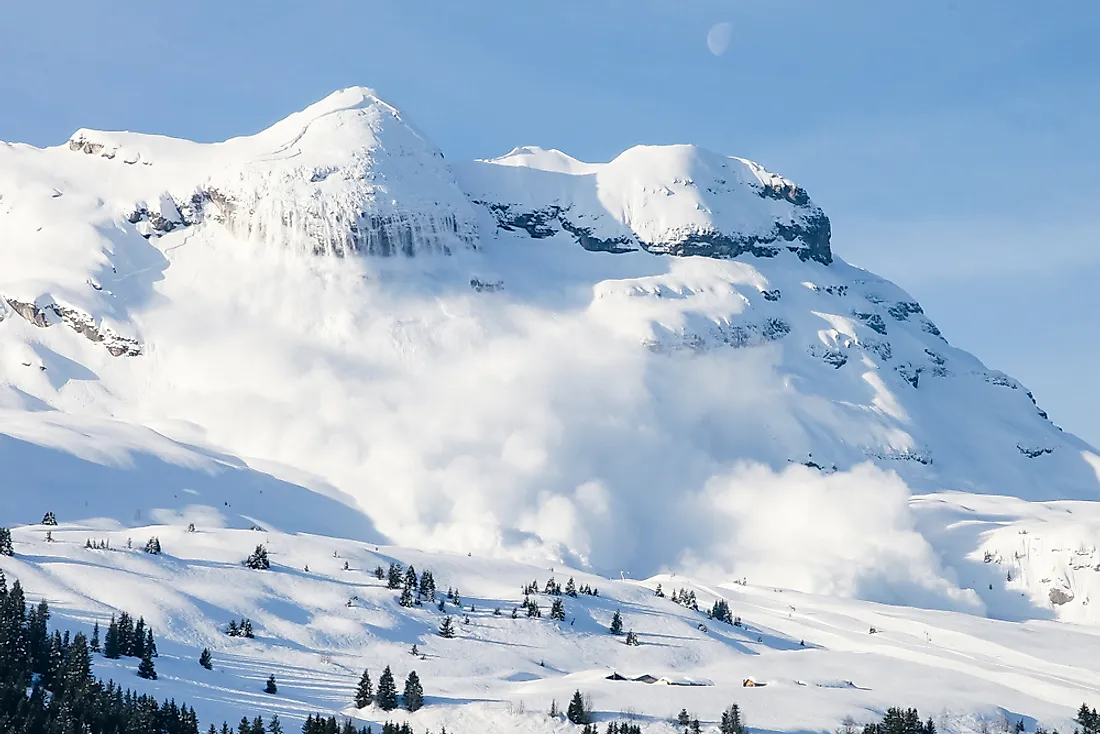What Causes An Avalanche?

An avalanche is basically a moving mass of snow that slides down mountain slopes under the force of gravity and buries all that comes in its path. Avalanches can be extremely deadly in nature and bury entire settlements located on the slopes or at the base of a mountain. Deaths are mainly caused due to a lack of oxygen when buried underneath several meters of snow. Avalanches can be triggered by both natural and human-induced factors. Often more than one factor act together to result in such a disaster. Here is a list of some of the causes of an avalanche:
Heavy Snowfall
Heavy snowfall leading to snow accumulation on slopes is one of the basic requirements for the occurrence of an avalanche. Heavy snowstorms are more likely to lead to avalanches as they often deposit snow in unstable areas from where an avalanche can readily start.
Wind Direction
The direction in which the wind blows also determines the pattern of snow accumulation on the slopes. Strong winds blowing in the upward direction might result in the collection of a mass of snow on the steeper slopes or cause the snow to overhand a mountain. Such snow can easily produce an avalanche.
Layering of Snow
When a layer of snow on a slope turns to ice and another layer later accumulated on top of the ice layer, the latter is highly susceptible to sliding down at the slightest trigger.
Steeper Slopes
Snow slides down under the influence of gravity during an avalanche. Thus, steeper the slopes, greater are the chances of accumulated snow to rush down the slopes at greater speeds. A small trigger like a rock falling on the unstable mass of snow can cause an avalanche.
Higher Temperatures
Higher temperatures can cause the surface layer of snow to melt. When a fresh snow layer accumulates on top due to a sudden snowfall, this layer is highly susceptible to sliding down due to the slippery surface on which it rests.
Earthquakes
Earthquakes generate seismic waves that cause the ground to vibrate. When the ground below a pack of snow on mountains vibrate, it can dislodge the snow and cause it to hurtle downwards as an avalanche.
Movements Or Vibrations Produced By Machines And Explosives
Often the vibrations or movements of snowmobiles or all-terrain vehicles in regions with unstable layers of snow can dislodge the layers from the surface and cause them to slide down under gravity. Construction activities involving the use of explosives to break down rock can trigger an avalanche due to the strong vibrations generated from such the explosion.
Deforestation
Plant cover often protects land against natural disasters like floods, tidal waves, strong winds, and even an avalanche. Rows of trees on the slope can check an avalanche from reaching settlements located at the base of a mountain. It can also slow down the movement of the avalanche. However, deforestation by humans for economic gains makes an avalanche-prone area more susceptible to deadlier avalanches.
Winter Sports Activities
Often, the pressure generated on a loose snow pack by skiers or other winter sports activities involving steep slopes can trigger an avalanche.











